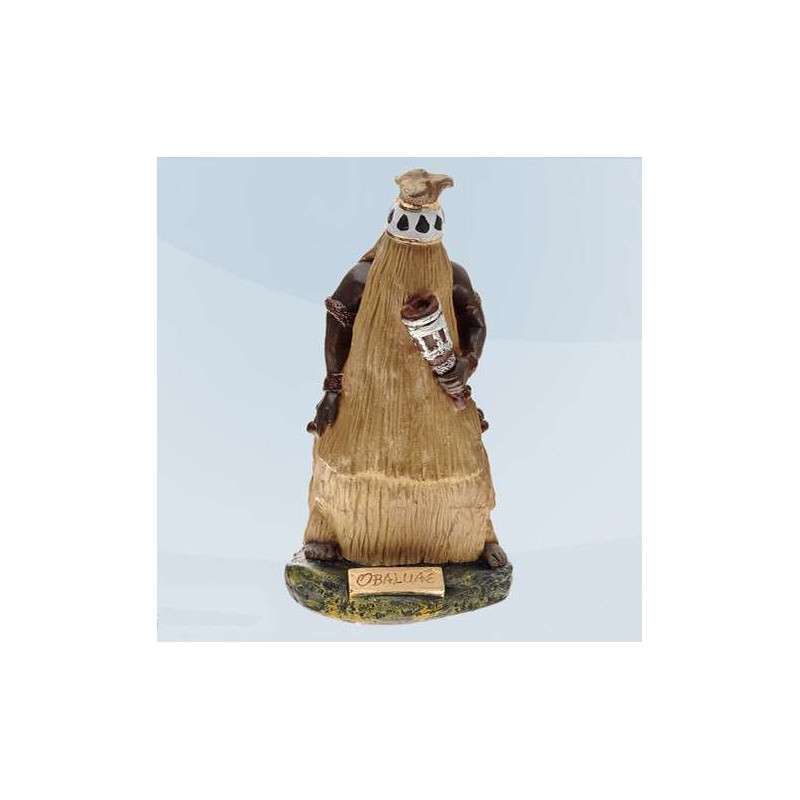



Image of Obaluae
Material: Hand-painted plaster.
Size: Approximately 10 cm tall.

Security policy

Delivery policy
The origin and history of Obaluaê date back to ancient African traditions. In Yoruba cosmology, Omolu was venerated as an ancestral Orisha, associated with the earth, healing and protection against disease.
It is believed that the figure of Omolu originated in the region of present-day Nigeria, more precisely in the city of Ifé. Oláwàiye, in Yoruba, means "the king who is lord of the land".
Omolu is the son of the Orixás Nanã and Oxalá and brother of Oxumaré. He was born with sores due to conflicts between his parents. Abandoned by the sea, he was rescued by Iemanjá, the queen of the sea, who welcomed him as a son and taught him how to cure illnesses and overcome adversity.
Due to his scars, Obaluaê began to cover himself with straw, keeping only his arms and legs on display. This experience made him introspective and moody.
Over the centuries, devotion to this deity spread to different regions of Africa, gaining regional variations in its legends and myths.
With the African diaspora and the transatlantic slave trade, millions of Africans were forced to cross the Atlantic and arrived in Brazil, bringing their religious beliefs with them.
Obaluaê in the Catholic Church
In the context of slavery, enslaved Africans faced oppression and prohibition to practice their traditional religions. To preserve their beliefs and avoid persecution, slaves developed religious syncretism.
Syncretism consisted of associating their African deities with Catholic saints, which the Portuguese colonizers imposed as a form of religious conversion.
In this process, Obaluaê was identified with São Lázaro, the Catholic patron saint of the sick and needy. In some traditions, he is also syncretized with São Roque.
This syncretism allowed their ancestral beliefs to survive over the centuries, preserving the rich mythology, rituals and traditions related to the deity.
Over time, Afro-Brazilian religions established themselves as an important means of preserving and perpetuating African beliefs in Brazil. The cult of Obaluaê found a safe space in this religion, becoming one of the main revered deities in the pantheon of orixás.
Symbols and characteristics of Obaluaê
The god of healing is represented with characteristic clothes and accessories, such as a mantle that covers the whole body, made of straw from the coast. He also carries the Xaxará, a kind of braided straw tube with magic seeds inside.
Relationship with the land and the disease
Obaluaê is often associated with the earth and the cure of diseases. He is considered the Orisha of health, being invoked to treat illnesses and physical and spiritual imbalances.
It is believed that he has the power to heal and alleviate suffering, but he can also bring disease and epidemics when disrespected.
Colors, day, herbs and offerings
The colors of the Orisha are black, white and red. The day of the week with which Monday is associated, and the date of its celebration is August 16th.
Its herbs are pariparoba, castor bean, cambará and dog cinnamon. As for the offering (ebó), his preference is popcorn.